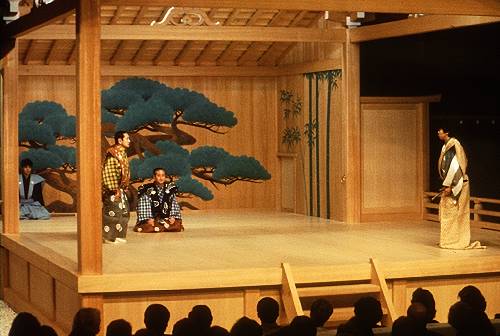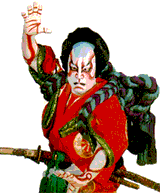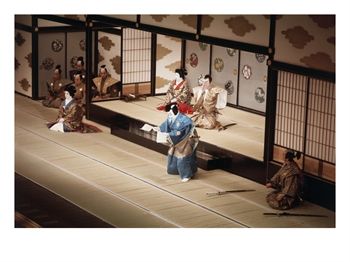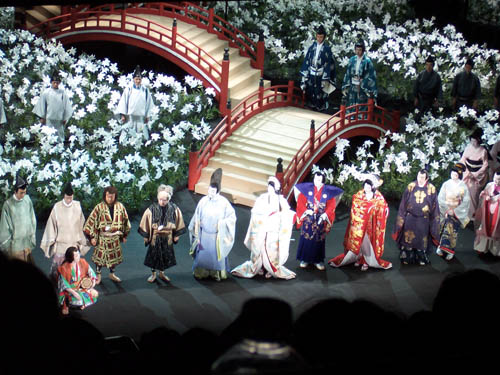Japanese theater was very popular back in the 1300's. Japanese theater mainly consist of story's from the past, myths and legends, heroes, kings, emperors, spirits, and gods.
Zeami wrote many plays in his life time. His plays were mainly created for the Noh theater, and he is considered as the theaters founder. He wrote many plays for his troupe to preform, many which are still preformed today.
Juggling, and acrobatics were also very popular but later turned into song and dance.
One of the many recognized aspects of the Noh theater, is that the 'shite' or main actor will always wear a mask along with the 'tsure', who are his companions. The only time he doesn't wear a mask, is when he is playing a Male character.
Though the Noh plays are not very dramatic, they are very gracefull and beautfully choreographed. Much work and study are put into them in order to remember all the script.


Kabuki Theater.
Typically the most popular form of Japanese Theater to the towns people. The higher social classed residents were rarely seen there. Its origins date back from the Edo period.
The Kabuki theater stage is special. It rotates and is equipped with special gadgets within the stage that are used for certain performances.
During the performances, it is popular for the audience to shout out the names of favored actors during short pauses within the act.
The whole performance is preformed by men, while most characters being played are girls. The Kabuki Theater was founded by Izumo No Okuni, a former female temple dancer from Koyoto.
Be for the performances were acted by men, women would play the part of the women actors. audiences got out of control. Many of the acts involved prostitutes, which caused the guy audiences to go out of control and that caused to much chaos. Men were baned to come to the performances, and were chosen to play the parts of women. The Theater was mainly based just for women, until the sho gunate clamped down on the troupe and called it unfair.
 The aragoto or 'rough style' of acting is exemplified by dramatic make-up and costumes. As seen in the picture to the left.
The aragoto or 'rough style' of acting is exemplified by dramatic make-up and costumes. As seen in the picture to the left.

